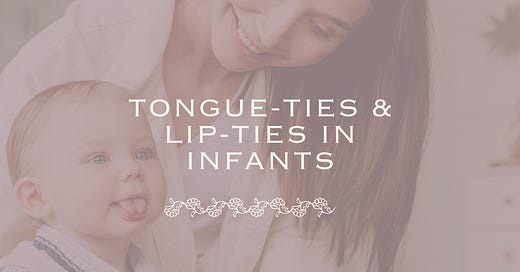Welcome to this comprehensive resource on tongue-ties and lip-ties in infants for parents. If you've stumbled upon this post, you're likely concerned about your infant's feeding or heard the terms and are curious about what they mean. This post is not meant to diagnose or treat any medical condition and is shared for educational purposes only. Consult your health care provider for diagnosis or treatment of any medical conditions.
Understanding Tongue-Ties and Lip-Ties
A tongue-tie (ankyloglossia) occurs when the piece of tissue under the baby's tongue (lingual frenulum) connects too closely to the tip of the tongue or lower gum or is so thick or tight that it restricts the movement of the tongue. Similarly, a lip-tie restricts the movement of the upper lip because of a tighter or thicker labial frenulum. Both these conditions can potentially interfere with an infant's ability to nurse at the breast and/or bottle feed, leading to feeding difficulties. These conditions typically occur together.
Keep reading with a 7-day free trial
Subscribe to Optimal Nurturing to keep reading this post and get 7 days of free access to the full post archives.






